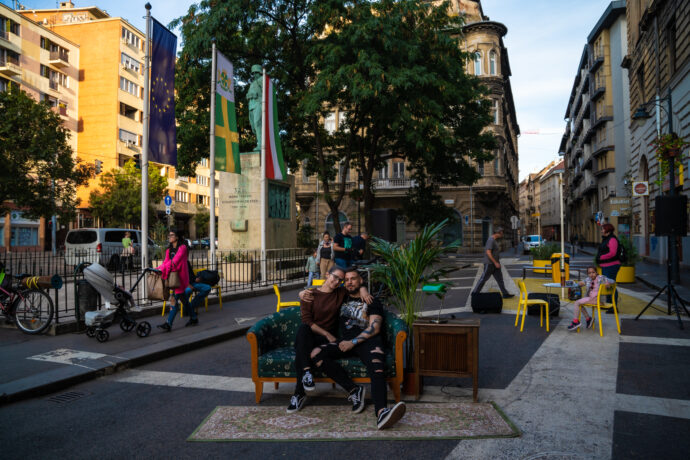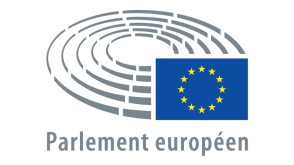
Across Europe, car congestion and safety concerns make school commutes a challenge, with many families relying on cars for their children’s daily travel. This dependency not only poses risks to children’s safety and health but also contradicts long-term environmental goals.
The school run increases traffic congestion, raises pollution levels, and reinforces car dependency among future generations. To create more liveable cities, instill sustainable habits, and provide safe, accessible routes for children, urban leaders must rethink school commutes. Budapest is emerging as a leader in this transformation. 1. 1. 1.Turning Sceptics into Advocates in District Eight
Through the Upper and Reallocate projects, along with progressive policies from the Centre for Budapest Transport (BKK), the city is committed to reducing car dependency, improving public spaces, and prioritizing sustainable transport—especially near schools.
Deputy Mayor Dániel Rádai of Budapest’s District Eight is leading this shift. Since 2019, under Mayor András Pikó, the district has transformed once traffic-heavy streets into pedestrian-friendly areas, replaced parking spots with public green spaces, and returned streets to the community.
Initially, the changes faced public resistance. However, the city adopted tactical urbanism—small, temporary projects to demonstrate the benefits of change. Seeing the improvements firsthand, residents responded positively.
At a public forum, Rádai recalled:
“At first, there was a lot of scepticism. A resident angrily asked if anyone actually liked the changes. I flagged down the next passer-by, who immediately praised them, saying the area was now much nicer to walk in. That moment showed that while initial reactions may be negative, engagement leads to understanding and support.”
The shift in perception was evident in this year’s elections, where the public rewarded the mayor with an even larger share of votes.
- District Eight’s Ripple Effect
The success in District Eight has inspired other districts to follow suit. For Budapest’s families, these transformations are not just about convenience but about quality of life. Safer streets offer children more independence, reduce stress for parents, and foster a stronger sense of community.
Ádám Bodor, BKK’s Mobility Director, sees the impact firsthand. His team regularly visits schools to educate students on sustainable transport and motivate local governments to enhance walking and cycling safety.
A recent survey of 50 students in District Eight revealed that over 80% arrive by public transport or active modes. However, in districts where the share is lower, parents cite unsafe streets as the main reason they avoid public transport, walking, or cycling.
To address this, BKK has launched school zones that slow traffic, restrict car access, and create safer walking and biking environments. These zones include traffic-calming measures, “kiss and ride” spaces, speed bumps, and better signage to alert drivers.
3.Reaching Parents, One Child at a Time
Bodor explains that convincing parents has been a challenge:
“Despite good public transport, families with young children are one of the hardest groups to persuade to use alternative modes. Now, we’re reaching parents through their children. If kids are excited about cycling or walking to school, they influence their parents’ behavior more than any campaign we could run.”
The strategy is working. In participating schools, nearly 60% of parents have changed their transportation habits. Children report feeling safer, and schools have become more pleasant, less chaotic spaces.
“Since these changes, many parents have asked why this wasn’t done sooner. The old chaos—cars everywhere, honking, unsafe conditions—was just accepted. Now, the benefits are obvious,” says Bodor.
4.Reclaiming Streets, Changing Lives
Budapest’s efforts to create walkable, bikeable, and public transport-friendly infrastructure reflect a broader commitment to health, sustainability, and community. The city sees these changes as crucial in shaping future generations’ views on urban mobility.
Going forward, Budapest plans to expand superblocks and school streets that close entirely to cars, building on successful pilot projects. These initiatives are setting an example for other districts and cities across Hungary.
A key part of this shift is Budapest’s new road network plan, approved in 2024. The plan aims to double the territory of 30 km/h and 20 km/h zones by 2030, creating more space for sustainable mobility and safer streets.
At its core, this transformation is about designing a city that serves everyone—not just those who drive. By reclaiming streets and prioritizing public spaces, Budapest is laying the foundation for a greener, more connected
More Information
